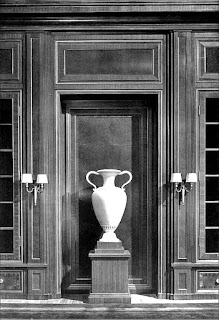Recent Images
from
'The Books of Foundation'
here are featured some of the more outstanding images recently added to 'The Books of Foundation'
click on the image and open in a new tab to view full size
click on the image title to go the the relevant page
see: 'The Assault of Materialism'
see: 'The Assault of Materialism'
see: 'The Assault of Materialism'
see: 'The Assault of Materialism'
see: 'The Assault of Materialism'
see: 'The Assault of Materialism'
see: 'The Assault of Materialism'
see: 'The Assault of Materialism'
see: 'The Assault of Materialism'
© Copyright Peter Crawford 2017
see: 'The Assault of Materialism'
see: 'The Assault of Materialism'
© Copyright Peter Crawford 2017

© Copyright Peter Crawford 2015
© Copyright Peter Crawford 2017
The Romantic Reaction
© Copyright Zac Sawyer 2016
Foreword
© Copyright Zac Sawyer 2016
The Romantic Reaction
© Copyright Zac Sawyer 2016
Incarnation of the Aeons
© Copyright Zac Sawyer 2016
© Copyright Peter Crawford 2015
© Copyright Peter Crawford 2015
© Copyright Peter Crawford 2015
© Copyright Peter Crawford 2015
© Copyright Peter Crawford 2015
Ἑρμῆς ὁ Τρισμέγιστος
Hermes Trismegistus
© Copyright Peter Crawford 2015
Hermes Trismegistus (Ἑρμῆς ὁ Τρισμέγιστος, "thrice-greatest Hermes"; Latin: Mercurius ter Maximus) is the purported author of the Hermetic Corpus, a series of sacred texts that are the basis of Hermeticism.
Arms of the Medici Family
© Copyright Peter Crawford 2015
A variety of factors contributed to the revival of ancient learning, including the social and civic peculiarities of Florence at the time; its political structure; the patronage of its dominant family, the Medici.
The origins of Bruno’s “Egyptianism” were the Hermetic core of Renaissance Neoplatonism, and the religious magic, or theurgy, taught by Hermes Trismegistus, particularly in 'The Asclepius', and also revealed in the writings of Porphyry and Iamblichus.
© Copyright Peter Crawford 2015
After centuries of falling out of favor, Hermeticism was reintroduced to the West when, in 1460, a man named Leonardo brought the 'Corpus Hermeticum' to Pistoia.
© Copyright Peter Crawford 2015
from an image by Erdehel
The philosophy of the Hermetica teaches that there is a transcendent ONE, or 'Absolut'e, in which we and the entire universe, in some mysterious way, participate. It also subscribes to the idea that other beings, such as Æons, Archons and Elementals (Dæmons), exist within the universe.
© Copyright Peter Crawford 2015
The cosmology found in the first book of the 'Corpus Hermeticum' begins when the ONE, by an act of will, creates the primary matter that is to constitute the cosmos. From primary matter the ONE separates the four elements (earth, air, fire, and water). Then the elements are ordered into the seven heavens, (often held to be the spheres of Mercury, Venus, Mars, Jupiter, Saturn, the Sun, and the Moon, which travel in circles and govern destiny).
© Copyright Peter Crawford 2015
'The Corpus Hermeticum' is the most widely known Hermetic text.
It has 18 chapters, which contain dialogues between Hermes Trismegistus and a series of other indiviuals.
With the growth of Humanism, artists turned to Classical themes, particularly to fulfill commissions for the decoration of the homes of wealthy patrons, the best known being Botticelli's 'Birth of Venus' for the Medici.
© Copyright Peter Crawford 2015
In sculpture, Donatello's (1386–1466) study of classical sculpture led to his development of classicizing positions (such as the contrapposto pose) and subject matter (like the unsupported nude – his second sculpture of 'David' was the first free-standing bronze nude created in Europe since the Roman Empire.)
© Copyright Peter Crawford 2015
The progress made by Donatello was influential on all who followed; perhaps the greatest of whom is Michelangelo, whose 'David' of 1500 is also a male nude study; more naturalistic than Donatello's, and with greater emotional intensity.
The 'Ignudi' are the 20 athletic, nude males that Michelangelo painted as supporting figures at each corner of the five smaller narrative scenes that run along the center of the ceiling. These figures are certainly in keeping with the Humanist acceptance of the classical Greek view that "the man is the measure of all things".
The meaning of these figures, to the uninitiated, has never been clear. Michelangelo, however, would have been well aware of the fact that although Seraphim and Cherubim (in fact Æons) are described as being winged creatures, they are often described as looking like men. It is correct, therefore, to conclude that the 'Ignudi' represent the lower Æons, who are the ever-present attendants of the ineffable ONE, - impassively watching and waiting on the fate of Humankind.
© Copyright Peter Crawford 2015
Bramante's Tempietto in San Pietro in Montorio, Rome, 1502 the 'High Renaissance', as it is called, was introduced to Rome.
Lenin Brood on the Future of the Proletariat
Kaiser Wilhelm IIThe Assault of Materialism
Industrialised Slaughter
The Assault of Materialism
The Assault of Materialism

The Spirits Awake
The Spirits Awake

The Spirits Awake
The Spirits Awake
The Spirits Awake






















































No comments:
Post a Comment